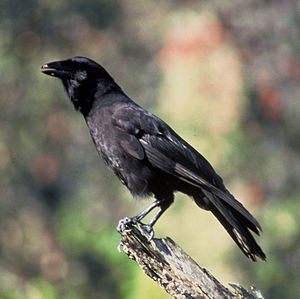Published February 28, 2016 - 1:30am
HOLLYN JOHNSON/Tribune-Herald
An ‘alala, which is extinct in the wild,
stands on a perch at Keauhou
Bird Conservation
Center
By TOM CALLIS Hawaii
It’s almost time for the ‘alala to once again spread its wings over Hawaii Island ’s forests.
Hawaii’s last remaining native crow species, extinct in the wild for
about 14 years, will begin to be released from a captive breeding program in
September, with a dozen in all to be offered freedom by year’s end to seed what
biologists hope will be their comeback.
“The ultimate goal is a self-sustaining wild population of birds,”
said John Vetter, a wildlife biologist with the state Department of Land and
Natural Resources. “We expect that will take a number of years. It depends how
successful we are.”
Success is not guaranteed.
The birds, which forage in undergrowth, face a number of threats in
the wild, including feral cats, mongooses and rats. The ‘io, or Hawaiian hawk,
also is a known predator.
An earlier attempt to release ‘alala in South
Kona in the 1990s proved unsuccessful as the birds became
susceptible to disease and predation. Of the 27 captive-raised juvenile birds
that were released, 21 died and the remaining six were recaptured.
Vetter said the state hopes for better success this time around, with
a larger breeding program and plans to release the birds in the Pu‘u Maka‘ala
Natural Area Reserve near Volcano.
He said the area is fenced to keep out ungulates, allowing for a more
mature undergrowth, which the ‘alala rely.
“We think that will help ‘alala with escape routes for ‘io,” Vetter
said. There also might be fewer threats for juveniles from non-native
predators.
The captive birds — 114 in all — are raised at the Keahou and Maui bird conservation centers, operated by the San Diego
Zoo.
The birds that will be released haven’t yet hatched.

No comments:
Post a Comment